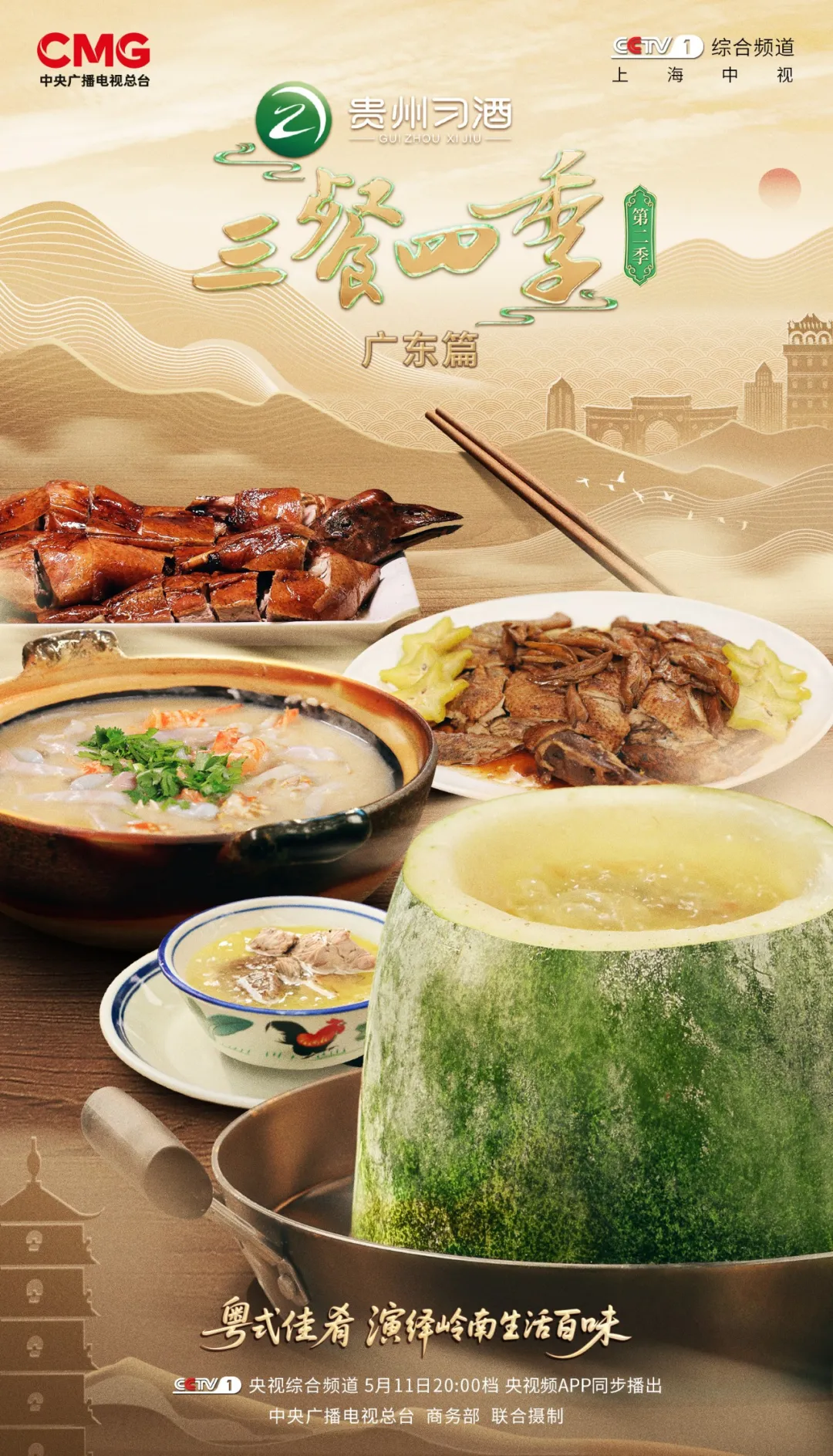
Whenever people talk about Guangdong, there is always one topic that cannot be avoided - Cantonese cuisine. In this food paradise, there are countless old flavors that people will never forget.
CCTV's large-scale food, culture and tourism program "Three Meals, Four Seasons" Guangdong Edition will be aired on CCTV-1 CCTV Comprehensive Channel at 20:00 on May 11. Hosts Sa Beining and Wang Jianing will join hands with literary guests Christy Chung and Yu Haoming, and cultural guests Chen Li and Lin Weihui to form a taste-seeking group to travel through the dazzling array of delicacies and experience the most authentic Lingnan food culture.
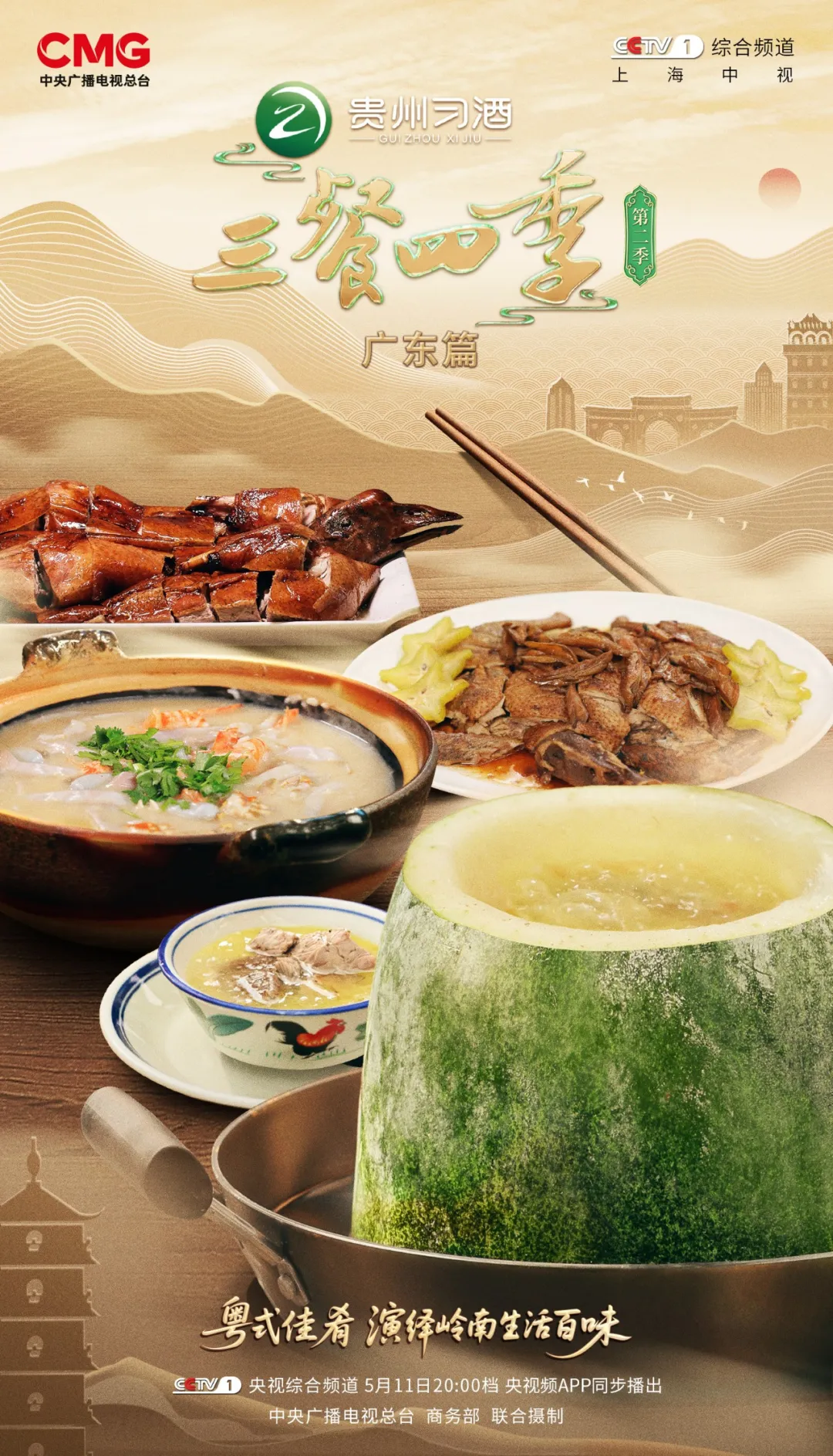
Poster of "Three Meals a Day, Four Seasons"
Winter melon soup: using melon as soup to preserve the delicious taste
In Jiangmen, the large green-skinned melon is not just a dish. The locals have used their skillful hands to give it a new role - locking in its freshness.
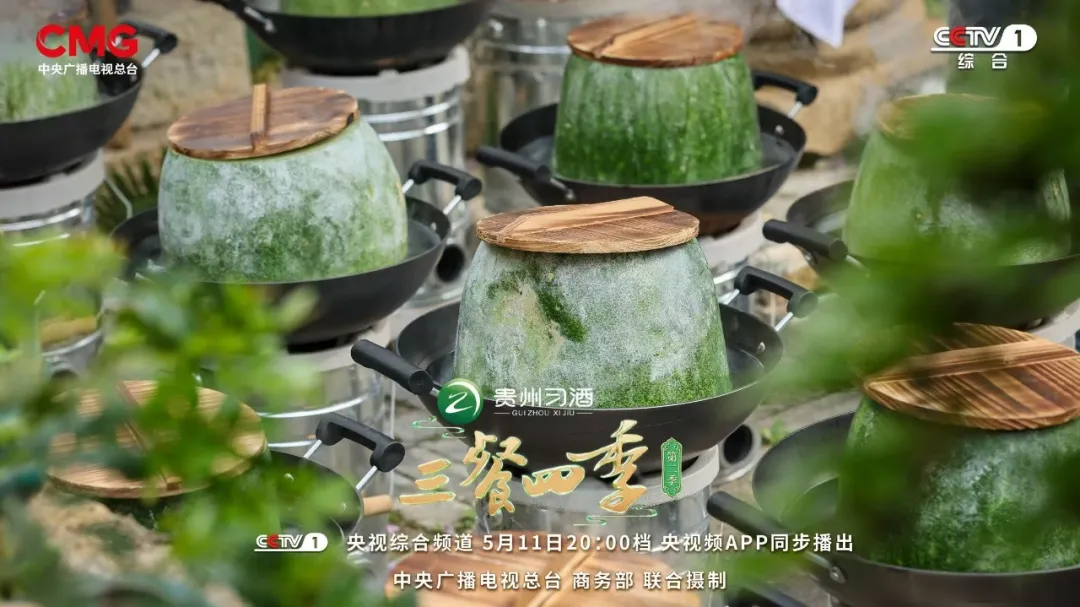
Winter melon soup
Cut off the head and tail of the winter melon, empty the inner flesh, cut the green-headed duck and spareribs into pieces, and stuff them into the melon with mussels, scallops and other ingredients. Add water and simmer for about 45 minutes. The winter melon gradually absorbs the meat and becomes soft and glutinous, and the fresh juice also seeps into the soup. Drink it in one gulp, the taste is pure and clear; sprinkle salt to add a finishing touch to stimulate the meat aroma; dip it in sauce to make the duck meat even more fresh.
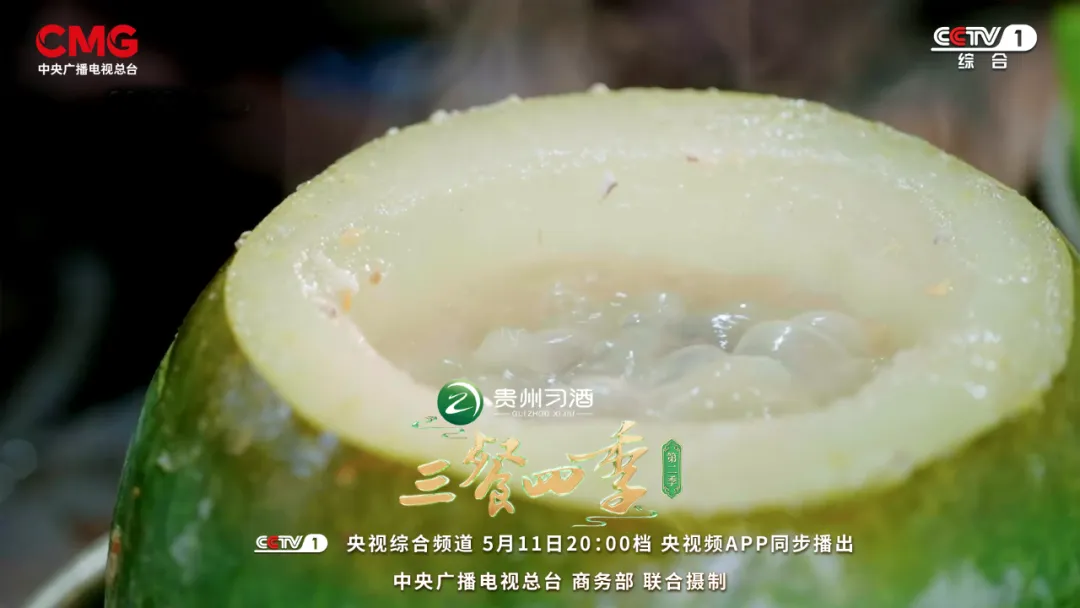
Winter melon soup
Sandworm porridge: hiding the sea in porridge
There is a widely circulated saying: "Food is good in Guangdong, fresh food is good in Maoming." On the dining table of Maoming people, a bowl of sandworm porridge never needs too much seasoning. As long as the ingredients are fresh enough and the stove is patient enough, the fresh air rising when the lid is opened will have the most authentic taste of the sea.

Sandworm porridge
Remove the internal organs and impurities of the sandworms, rinse them repeatedly and set aside. Add the crab, scallops and tiger prawns to the pot and stir-fry until fragrant, pour in rice wine to stimulate the aroma, and add water to boil. Then put the indica rice with lard into the pot, boil over high heat, then simmer for 25 minutes on low heat, then add the sandworms. The worms will quickly curl up in the hot porridge, and the rich flavor will be released in 60 seconds.

Sandworm porridge
Fire garlic: Garlic also "lives in a villa"
In Kaiping, there is a kind of garlic named "fire". The word "fire" not only points out the process of smoking and frying, but also expresses the spicy and strong taste. Fire garlic has become a regular guest on the local people's table with its unique flavor and health benefits.

Garlic
After drying, the fresh garlic heads come to the crucial step of smoking. In the smoking room, a layer of dry straw is ignited from both ends, and under the cover of wet rice husks, thick smoke is produced, which smokes out the moisture of the second layer of garlic heads and forces out the garlic oil. This operation is repeated every day. In order to make the fire garlic evenly exposed to smoke, the garlic needs to be turned over every 3 days. After 10 days, the fire garlic is born.
Compared with ordinary garlic, fire garlic is more compact inside, spicier in flavor, and has a denser taste. It can not only be pickled alone, but also paired with countless ingredients to add deliciousness and enrich the taste.

Garlic
The unique smoking method locks in the flavor of the garlic and also preserves a sense of attachment to the soil and water of their hometown. In the early years, when Kaiping expatriates went to Southeast Asia to make a living, they always stuffed a few bunches of garlic in their bags. Even if they traveled across the oceans and over long distances, the garlic would not sprout or rot during transportation. For the expatriates, the moment they eat the garlic, their tongues have already returned to their long-lost hometown.
Gujing Roast Goose: A Taste Poem Created by Heaven, Earth and Man
How important is roast goose to the Cantonese? The Cantonese often say "no goose, no feast". In this province where goose is eaten, about 120 million geese are made into roast goose every year, which shows its status.
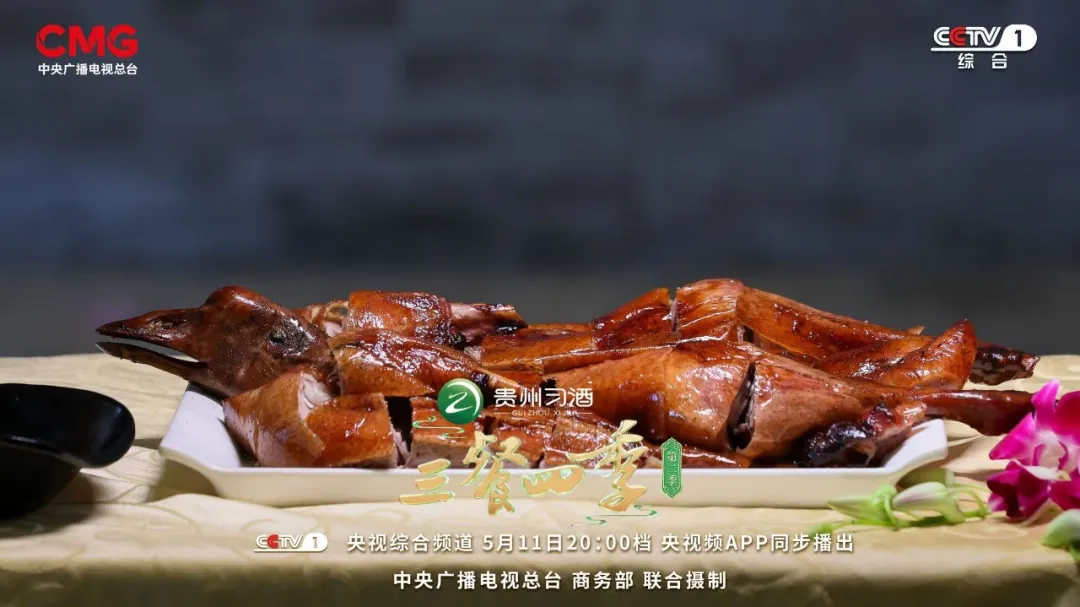
Gujing Roast Goose
A delicious Gujing roast goose is made with great care. Local dried tangerine peel that has been aged for 10 years and naturally dried and fermented sweet soy sauce are used, stuffed into the goose belly along with other spices and seasonings, sealed with silver needles, and evenly sprinkled with skin water made of honey, maltose, and red Zhejiang vinegar. After air-drying for 3 hours, it can be put into the oven for roasting.
The ingredients used for roasting are also very particular. Lychee wood that is more than 2 years old gives the roast goose a lychee aroma. When the goose is evenly red, it is the best time to take it out of the oven. Drain the sauce, remove the bones and chop into pieces, and a classic dish is ready.

Gujing Roast Goose
Bite into the crispy thin skin, the juice spreads on the tip of your tongue, and the fragrance, freshness and sweetness are perfectly blended at this moment. The taste is delicate, mellow and tasty, and every bite is an ultimate enjoyment.
There are game in the mountains and fresh delicacies in the sea. All things endowed by nature have been brewed here into all kinds of flavors. Generations have used their common food wisdom to preserve this taste and also preserved the local life. People here believe that good taste does not need to be sought far away, but is on this land, in the original taste of food, and in the three meals a day.

Poster of "Three Meals a Day, Four Seasons"
The stir-fried crispy tilapia is crispy and refreshing, the black chicken soup with tangerine peel and lychee is sweet and not greasy, the stir-fried bitter melon with fermented black beans is salty and fragrant, the stir-fried crab with three spicy sauces is fresh, spicy and fragrant... How many mouth-watering delicacies are there in Guangdong?


